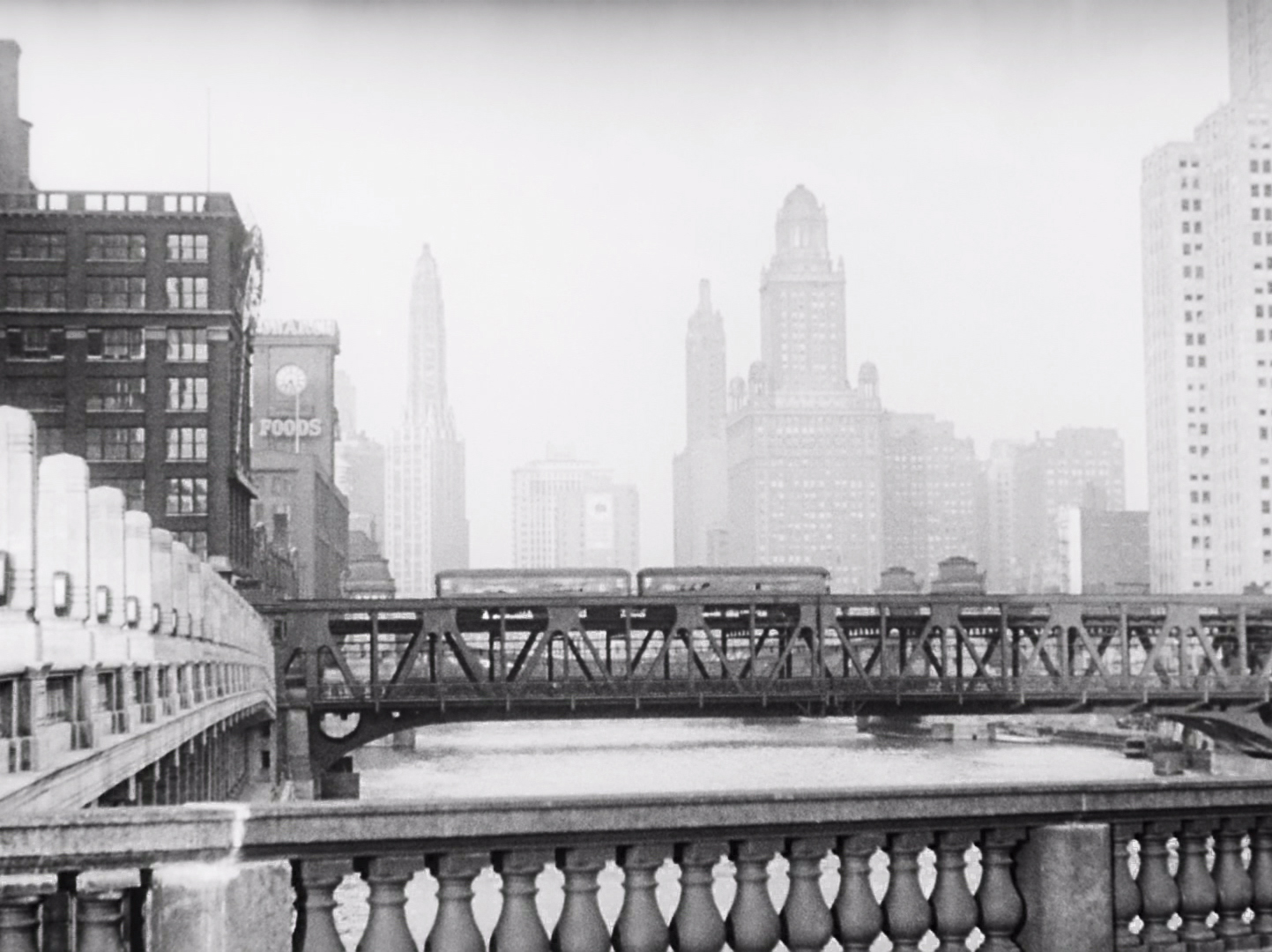Weltstadt in Flegeljahren. Ein Bericht über Chicago / Chicago - World City in Boorish Years
Weltstadt in Flegeljahren. Ein Bericht über Chicago / Chicago - World City in Boorish Years
Germany 1931, 62 min. | HD-s/w-restored version
Like Walter Ruttmann in his canonical film 'Berlin. Die Sinfonie der Großstadt' (The Symphony of the Great City), Heinrich Hauser also takes on Chicago, a pulsating big city whose rhythm of life he explores on film. Both directors portray modern everyday life as a dynamic game of movement, a movement in synchrony of machine and man, of urban traffic and production processes of factory work. Where Ruttmann depicts the 'intoxication of movement' in his symphonically constructed film, Hauser refers to the social reality of life in the American metropolis. With 'Chicago. World City in Boorish Years', Heinrich Hauser created one of the classics of international documentary film.
The film Chicago. World City in Boorish Years comprises five acts. Each act is dedicated to one theme:
1. Life on and around the Mississippi
2. Metropolitan traffic
3. The use of the machine and its dominant position in production
4. The consequences of mechanisation
5. The leisure time of the city dwellers.
The new music by Andy Miles for orchestra and a rich wind section is set in the style of traditional Chicago jazz and expands this sound spectrum to modern jazz in the course of the film. The music thus builds a bridge between the time the film was made in the early 1930s and today, accentuating the montage, reacting to hidden details and underlining the modernity of Heinrich Hauser's film, which registers the social contrasts of the metropolis of Chicago and its people with a close eye. It is the pulse of this booming city, a city full of contrasts and great promise, that the music makes audible and tangible again.
Chicago - World City in Boorish Years
Music for jazz orchestra to the silent film of the same name by Andy Miles (2020).
Instrumentation:
2(picc,alto).0.2(1.Soprano-,Alto-,TenorSax; 2.BCla,BaritonSax).2 - 4.2(trumpet in Bb).3(1. u.2. TenorTrb, 3. BTrb) - Drumset, 3 perc, Jazz Doublbass - Strings (min. 4.3.2.2.1)
Percussion with: susp. cymbal, chimes, Tamtam, snare, cowbell, woodblock, small toms (or roto toms) , gran casa, templeblock (4), shaker, whistle (Trillerpfeife), Xylophon, Schellenring, tambourine, claps or wood whip, triangel, typewriter, Klangholz (Claves), Bongos, Donnerblech (thunder sheet), windchimes, car horns (3), Vibraphon, Kastagnetten, ratchet, bells (Schiffsglocken), piatti, metal trash, guiro.
Andy Miles (*1964)
studied classical clarinet in Bremen and Hanover, among others with Prof. H. Pallushek. As one of the youngest clarinettists, he became principal clarinettist of the Hamburg Philharmonic in 1991. Later he moved to Cologne to the solo position of the WDR Funkhausorchester Cologne. In addition to his activities in the WDR Funkhausorchester, Andy Miles performs internationally both in chamber music formations and as a soloist, playing with orchestras such as the Duisburg Philharmonic, the St. Petersburg Chamber Orchestra, the Slovak Sinfonietta, the Izmir State Symphony Orchestra and the Peking Symphony Orchestra. Again and again he breaks musical boundaries. His past as a saxophonist in rock bands, as a tinwhistle player in folk bands, as a clarinettist in various jazz formations and last but not least as a solo clarinettist in traditional orchestras enables him to move in the most diverse musical genres.
Heinrich Hauser (1901-1955)
The son of a Berlin physician, he became a naval cadet in 1918. Afterwards, Hauser practised a wide variety of professions and was at times a sailor, miner, photographer and technician. After his first professional experiences as a staff writer for the "Frankfurter Zeitung", Hauser began writing in l92O and came to public attention in 1925 with his expressionist novel Das zwanzigste Jahr / The Twentieth Year (Potsdam). His literary breakthrough came with his novel Brackwasser / Brackish water (Leipzig 1928), for which he received the Gerhart Hauptmann Prize in 1929. This was followed by the novel Schwarzes Brevier / Black Breviary (Berlin 1930), a description of the steel industry in the Ruhr area. Another focus of Hauser's literary output is his travelogues such as Feldwege nach Chicago / Field trials to Chicago (Berlin 193I) or his reportage Australien. Der menschenscheue Kontinent / Australia. The shy continent (Berlin 1938). In 1938 Hauser emigrated to the USA, where he articulated his opposition to Hitler from a conservative point of view in books such as The German talks back (New York 1945). After returning to Germany, Hauser was an editor at the Stern magazine in Hamburg in 1949. He made two films in 1931: The Last Sailing Ships and Chicago. World City in Boorish Years.
Credits
- Direction, Screenplay, Camera:
Heinrich Hauser - Production:
Naturfilm Hubert Schonger, Berlin - Score music:
Andy Miles (Commissioned by ZDF in collaboration with Arte) - Editorial:
Nina Goslar, ZDF - Production:
Thomas Schmölz, 2eleven music film










